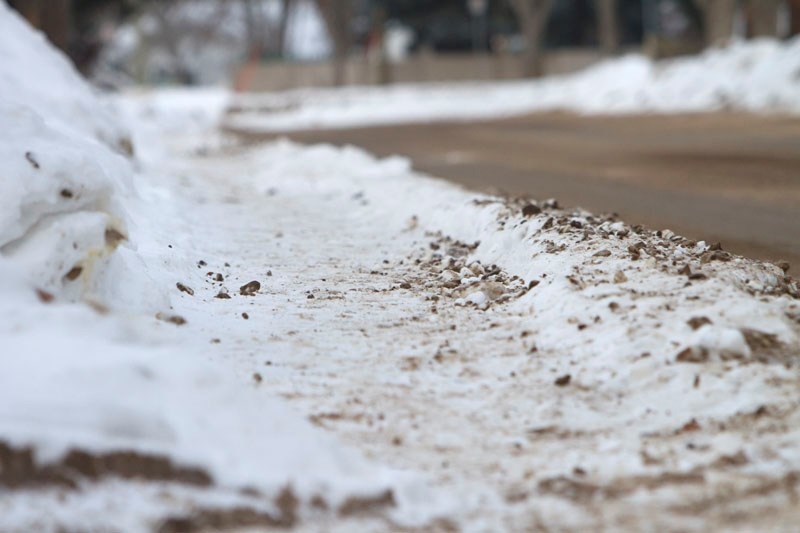The recent death of a St. Albert senior killed while crossing the road in her motorized scooter may warrant a review of accessibility in the city, says a local disability advocate.
Paul Fujishige, executive director of Transitions – a local organization working to improve the quality of life for citizens with disabilities – said a review might look at snow clearing, transit service and walk-light length. The need for a review depends on the findings of the ongoing police investigation.
“Anything that promotes safety … is definitely worth looking at because we don’t want to see anything like that happening,” he said. “We want to prevent that as much as possible.”
A 68-year-old St. Albert woman died Wednesday after a car struck her motorized wheelchair in a marked crosswalk on Bellerose Drive, between St. Albert Centre and Safeway.
St. Albert RCMP said at the time of impact the woman was crossing against a red light and that the driver of the car that struck her had a blocked view of the crosswalk. The collision remains under investigation and no charges have been laid.
It is not known if the woman entered the intersection when she had the right of way, or while facing a red light.
Fujishige said navigating the streets of St. Albert is not an easy feat in a mobility aid, but doing so in the winter months has added danger.
Snow-covered and ice-caked sidewalks are a hurdle wheelchair-bound citizens are forced to overcome. When sidewalks are impassable, it sometimes pushes those on wheels into the roadway where travel is often easier, he said.
“Wheeling down the road is definitely not what you want to be doing,” he said. “Anytime you’re in a situation where somebody else has to be watching for you rather than you being able to watch out for yourself, I guess that’s a risk that can lead to pretty tragic consequences.”
Fujishige said many people simply stay at home because navigating streets and sidewalks is too risky.
“There’s no doubt snow is an impediment to progress to being able to move,” Fujishige said. “Everybody has to be cautious.”
He said exercising caution is a key component in preventing similar incidents in the future.
Michael Khazanovsky, service manager at Aspen Healthcare’s Kingsway location, said individuals in motorized wheelchairs or power chairs must simply demonstrate common sense.
Under the Traffic Safety Act, individuals using mobility aids are considered pedestrians – Khazanovsky said they must behave like such and proceed only when given the right-of-way.
He said when it comes to navigating winter streets and sidewalks, travel can only be done safely if snow has been cleared. If sidewalks are still covered in snow and ice, it is safer to stay at home.
“When it comes to power chairs in winter time, I usually tell all my clients to keep a cellphone with them because if it’s cold and something happens to the power chair, they have to phone and ask for help,” he said.
Khazanovsky said it is never appropriate for power chairs to ride on the road, unless in a marked crosswalk.




